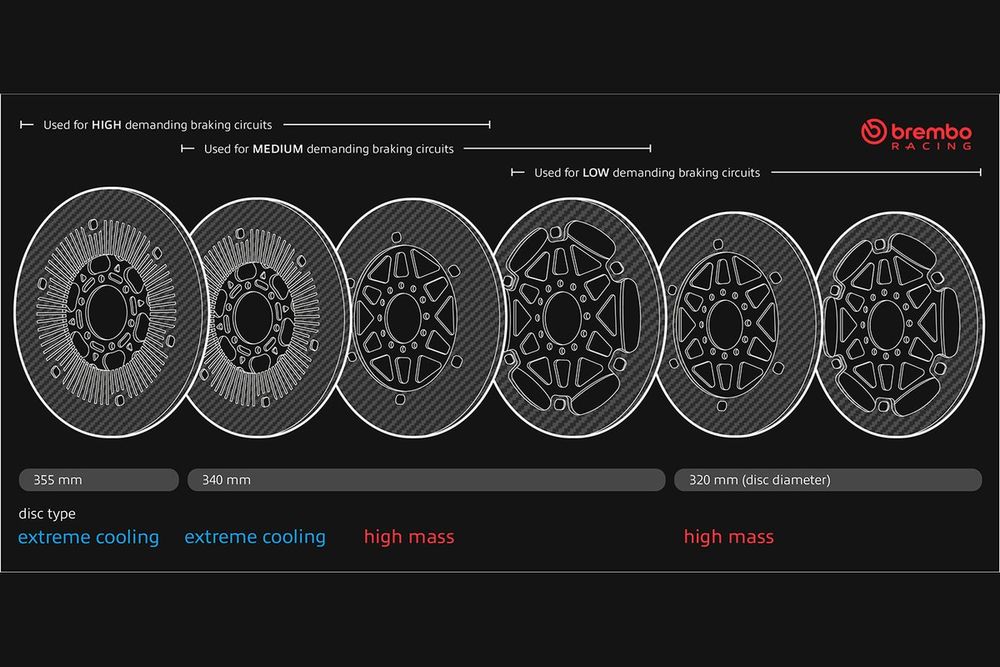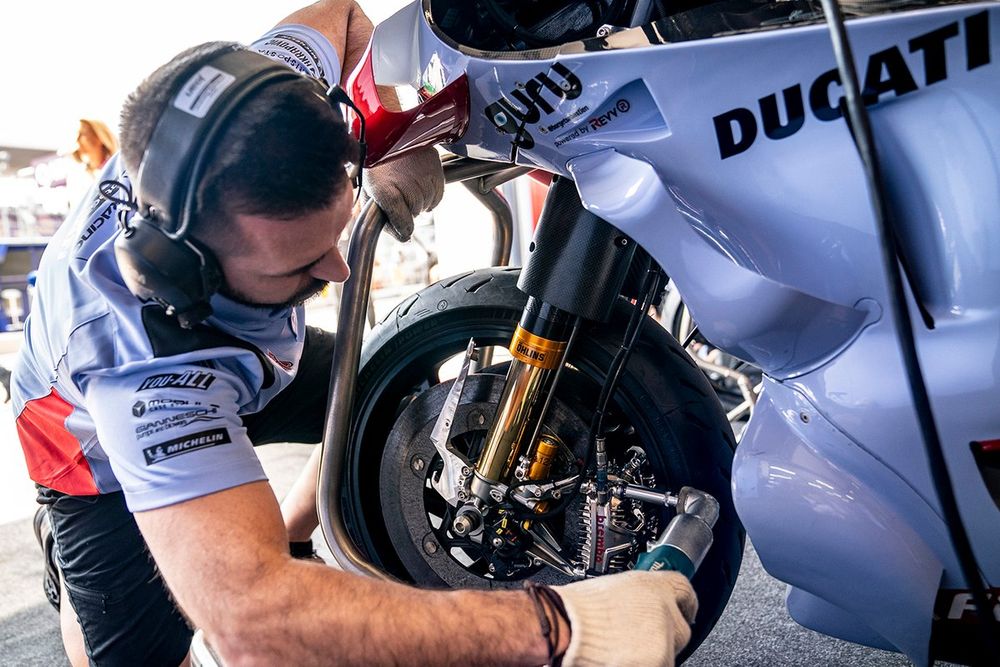The bikes’ 1000cc engines produce 270hp but their tiny contact patches and lack of downforce relative to cars costs them dearly in lap time when compared to a Formula 1 machine.
For example, Valtteri Bottas lapped his 2019 F1 Mercedes in 1m32.029s in qualifying for the US Grand Prix at Austin’s Circuit of the Americas, compared with Maverick Vinales’ 2m00.864s in MotoGP qualifying there in 2024.
However, a few years ago Red Bull pitted Dani Pedrosa’s KTM RC16 against Liam Lawson in an RB8 over a quarter of a mile from a standing start, and the bike won hands-down – mainly thanks to its superior power-to-weight ratio (the RB8 weighing in at 640kg compared to the KTM’s 157kg).
Their narrow nature also means very little drag, allowing MotoGP bikes to max out at around that 220mph mark. Which is all well and good in a straight line, but how do you get them slowed down for the twisty bits?
MotoGP disc brake detail
Photo by: Brembo
What’s the technology behind MotoGP brakes & who makes them?
For the ninth season running, Italian-based Brembo supplies all 22 MotoGP riders with a fully-customised braking system and service. The components of the system are brake calipers, carbon and steel discs, master cylinders, clutch pumps and pads.
Its monobloc caliper, called the GP4, is machined from a solid piece of aluminium. It features an amplification system that allows the braking torque to be increased, which means that the rider gets greater benefit from applying the same pressure to the brake lever.
Meanwhile, a spring device on the anti-drag system reduces the residual torque and stops the pads and discs coming into contact with each other.
Immense stopping power is generated by the use of carbon front discs: Brembo offers different diameter sizes and each is available in three material specs – finned, high mass and standard. A smaller diameter steel disc is used at the rear, as engine braking assists with the process on that end.

MotoGP disc brake options
Photo by: Brembo
During the season, most riders use 340mm diameter carbon discs, splitting between high mass (for higher-end requirements) and standard mass (low end) – with 320mm also available. Ventilated disc solutions, one option with a diameter of 355mm, are available for more demanding circuits such as Spielberg, Buddh, Motegi, Buriram and Sepang.
The thickness of the discs, regardless of diameter, is 8mm, while their weight varies between…
Click Here to Read the Full Original Article at Autosport.com – MotoGP – Stories…

